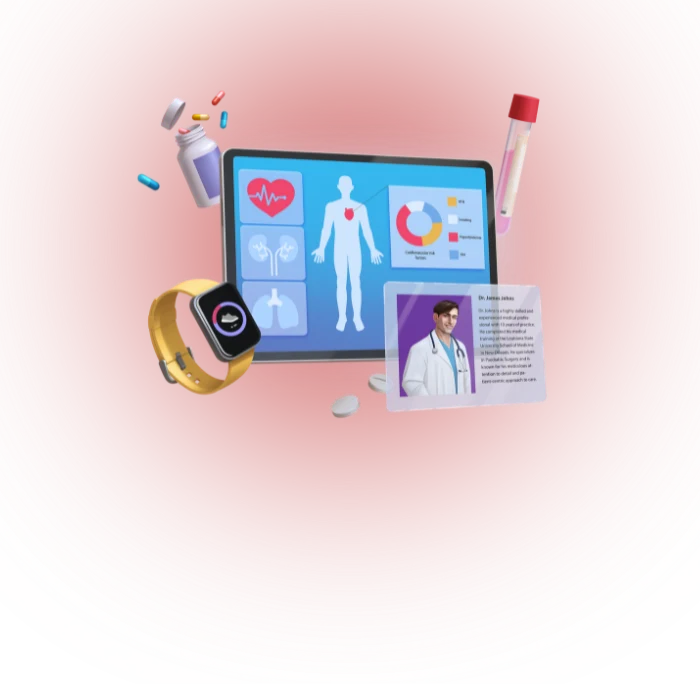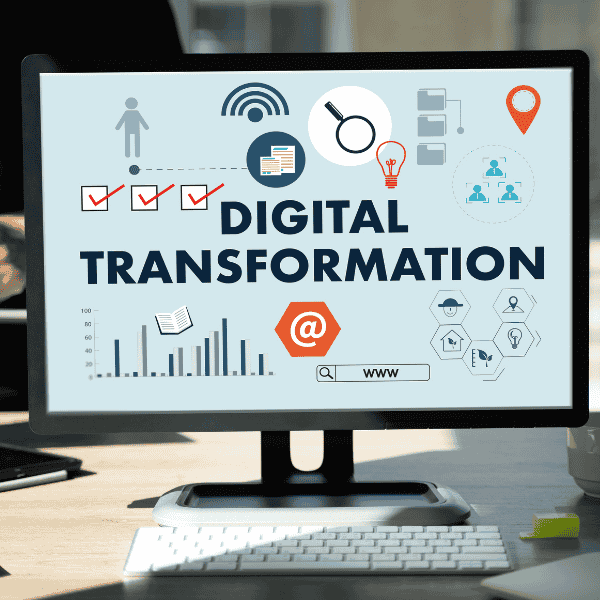The healthcare industry is undergoing a major digital transformation. Emerging technologies and innovations are reshaping how healthcare is accessed, coordinated, and delivered. From telemedicine advancements to wearable devices to health informatics and artificial intelligence (AI) applications, digital health solutions aim to make care more proactive, predictive, preventative, personalized, and participatory for patients. As healthcare grows increasingly high-tech, many are now wondering — is digital health defining the future of medicine?
The Digital Health Revolution
Digital health broadly encompasses categories like mobile health (mHealth), health information technology (IT), wearable devices and apps, telehealth/telemedicine platforms, and advanced data analytics using AI and automation. It shifts healthcare’s focus toward connectivity, data, and analytics to deliver improved access, efficiency, and quality of care.
In recent decades, healthcare has already seen substantial tech-based changes. Electronic medical records (EMRs) now digitize patient health information and diagnostic images versus traditional paper files. Remote patient monitoring tools allow chronic illness tracking from home. Telemedicine services make virtual doctor visits, online urgent care, and video consults possible for many routine and specialty appointments.
But today’s most cutting-edge digital health innovations take these foundations much further — with transformative potential yet to be realized. Key healthcare technology trends powering this digital health revolution include:
Connected Health Ecosystems: The Internet of Things (IoT), sensors, wearables, implants, and integrated data platforms are linking patients, providers, payers, tools, treatments, research, and administrations together into interconnected ecosystems united by health data and analytics.
Intelligent Analytics: Advanced analytics leverages big data, automation, machine learning, and AI to derive predictive, prescriptive, and personalized insights for improving everything from diagnostic accuracy to treatment plans, patient engagement, medical imaging, readmissions risk, hospital workflows, population health analysis, and more.
Virtualized Healthcare: Telehealth services, remote patient monitoring platforms, and virtual/augmented reality tools simulate in-clinic experiences remotely while gathering patient data for tracking and engagement.
Patient-Centric Design: The consumerization of healthcare increasingly focuses solutions on user experience, convenience, price transparency, connectivity, and participation — catering to patient needs versus clinical limitations.
Precision Health Advancements: Genomics, biomarkers, and microbiome mapping personalize prevention, diagnoses, treatments, and lifestyle recommendations tailored to an individual’s unique makeup versus broad demographics.
Accelerating Factors Driving Digital Health Adoption
What key factors account for digital health’s rapidly accelerating adoption and innovation? The COVID-19 pandemic dramatically boosted telehealth services, virtual care access, remote monitoring, and care coordination tech. But additional driving forces include:
● Healthcare Consumerism – Patients bear more financial responsibility and decision authority — demanding convenient, transparent, personalized care.
● Prevention Focus – Keeping populations healthier slashes downstream treatment costs later on — shifting focus earlier in the cycle onto tech-enabled patient engagement and wellness.
● Interoperability Mandates – Open data standards remove barriers to health information exchange and access across tools and networks.
● Value-Based Care – Outcomes-driven reimbursement models incentivize digital health efficiencies and better coordination through data liquidity versus transactional care volume.
● Personalized Insights – Precision health revelations transform standardized guidelines into individually tailored diagnostics, treatments, medications, screenings, and lifestyle steps based on each patient’s unique makeup.
● Chronic Conditions Crisis – Digital health tools better manage escalating chronic illnesses like diabetes, obesity, cardiovascular disease, cancer, arthritis, Alzheimer’s, and depression via remote tracking, telehealth access, AI-assisted diagnostics/treatment, genomics breakthroughs, and patient engagement.
● Silver Tsunami – Expanding aging populations drive demand for tech-enabled independent living, remote care, coordination, and monitoring tools to maintain health, and mobility, reduce risks from falls, medication errors, and hospital readmissions, and for early disease detection.
● Clinical Burnout – Physician and nurse shortages exacerbate staffing crunches — calling for workflow automation, AI assistance, better data liquidity, and virtualized care team collaboration to alleviate stresses.
Digital Health Use Cases Transforming Patient Journeys
Myriad digital health use cases already impact patients across their care journeys — from initial outreach to ongoing health maintenance. Expanding innovations aim to make this end-to-end experience far more personalized, proactive, participatory, and preventative. Key examples include:
Pre-Care: Apps, in-home/wearable devices, genomics testing, and risk calculators allow patients to self-monitor health data for personalized disease pre-screening insights and early detection of potential issues before they escalate — without yet needing clinical care.
Access/Scheduling: Online patient portals, risk assessments, and telehealth platforms guide to the optimal size and urgency of care based on personalized trends. Integrated scheduling then enables direct digital booking.
Intake/Triage: Chatbots field initial questions to appropriately triage intake while apps gather patient-reported history/chief complaints pre-visit for faster appointments.
Diagnosis: Remote patient monitoring data fuels more granular pattern detection for earlier diagnostic signals. AI-assisted diagnoses aid decisions using millions of case comparisons. AR/VR simulates immersive on-site exams from a distance.
Care Planning: Personalized care algorithms factor individual disease risks, comorbidities, genetics, past treatments, and preferences to tailor precision intervention steps — vs. generalized standards. Apps then support patient engagement and coordination.
Treatment: Connected IoT treatment tools auto-adjust dosing to patient responses while tracking usage and biometrics. AR surgical assist apps guide procedures. Wearables monitor side effects and complications risk post-discharge.
Ongoing Health Maintenance: Patient engagement platforms sustain preventative behaviors, chronic disease self-management, care plan adherence, health literacy education, medication management, and refills, safety/fall alerts for high-risk groups, and better long-term outcomes between encounters.
The Opportunity to Reimagine Healthcare
While today’s disjointed healthcare often leaves gaps between these steps, seamless digital health integration holds the potential to transform fragmented journeys into orchestrated, personalized experiences that continuously optimize well-being. This requires reimagining care delivery’s status quo.
Many incumbent healthcare models still silo data stores, factions, and steps — creating barriers to health system interoperability, data liquidity, patient engagement, intervention timing, care coordination, treatment adjustments, and outcomes improvement. Digital health presents tools to break down these silos by bridging constituents and steps into interconnected ecosystems.
Fully realizing this vision demands embracing patient/provider collaborated care supported by interconnected tools, transparent data, intelligent analytics, customizable experiences, and shared objectives. This expanding digital foundation sets the stage for optimizing health beyond episodic urgent care upon emerging patient needs — instead sustaining continuous well-being improvement.
Beyond promised healthcare advances, digital health also brings disruptive workforce, ethics, accessibility, and customer experience expectations into medicine — demanding consumer-grade ease, mobile-first convenience, automation, transparency, personalization, and ubiquitous access across demographics.
Health organizations must increasingly compete within overall life/wellness verticals where engagements hinge on earning participation through trust and value — not captive patient audiences. Those falling behind these expectations risk a loss to substitutable solutions or care venues able to meet accelerating experience standards and delivery innovation velocities now reshaping medicine and associated health verticals.
The Road Ahead
While questions and obstacles do exist on the path ahead, digital health’s promise is too immense to ignore. At its best, thoughtfully implemented technology harmonizes with collaborative human care while alleviating the system’s gravest pain points across affordability, access, outcomes, experiences, and resource constraints. Early success indicators for this vision include:
● Applications attaining product-market fit across various niches to demonstrate digital health viability and value
● Health data usage expanding from narrow use cases toward ecosystem data liquidity and exchange velocity
● Pilots progressing to scalable solutions capable of handling entire populations
● Point solutions integrating into harmonized toolchains and interconnected system architectures
● Business models evolving beyond incremental efficiencies toward holistic value generation and intelligent, continuous health optimization
The most critical determinant of digital health’s success includes maintaining humanism and the heart behind health technology — leveraging AI, automation, and VR capabilities to augment (not replace) human care connections, empathy, ethics, oversight, and trust. Technological tools alone cannot mend cultural elements also requiring alignment across patient mindsets, physician practices, payer policies, health entity operations, governmental regulations, and research directions for consumer-centric designs optimized to human needs.
But the possibilities remain profound. Granular health data liquidity, closed-loop learning systems, and personalized interventions could navigate patients from risky trajectories to sustainable well-being through precisely timed, petite interventions scaled across populations. Frictionless experiences meeting people wherever they are could make care remarkably simple to understand and access. And increasingly networked care ecosystems may shift the model from per-episode urgent fixes to proactive health optimization as our default.
Realizing this promise demands upfront collaborative investments — but with disproportionate long-term dividends over merely sustaining the troubled status quo. The opportunity for thoughtful, ethical digital health integration benefiting entire communities offers perhaps the greatest healthcare promise in generations. The collective choices we make today will determine whether this vision gradually manifests over the decade ahead.
Conclusion
In closing, emerging digital health technologies demonstrate tremendous potential for transforming how we monitor, access, coordinate, and optimize health and care. Key innovations across telehealth services, connected devices, health IT/data interoperability, advanced analytics, and more increasingly place health management into patients’ hands for greater engagement, outcomes, and value. Though obstacles exist, thoughtful digital health adoption offers solutions to many current healthcare pain points around costs, staffing, access disparities, care fragmentation, facility capacities, and epidemic response limitations hindering medical system performance today. Yet realizing this full potential requires upfront collaborative investment into new operating models, ethical oversight safeguards, change management, workflow evolution, patient education and digitally enhanced (though still human-centered) care delivery ecosystems. Progress won’t happen overnight. But the long-term promise remains compelling. If digital health’s exponential growth to date offers any indication, we appear poised at merely the opening act of a healthcare revolution just beginning to unfold.
FAQs
What is the role of digitization in modern healthcare?
Digitization in modern healthcare streamlines patient records, enables telemedicine, improves data analysis and improves treatment acccuracy.
How is AI transforming healthcare services?
AI is transforming healthcare by enabling faster diagnostics, personalized treatment plans, predictive analytics and automation of routine tasks.
AI integration in Health care improves patient outcomes, reduces costs, and enhances efficiency across healthcare services.
What impact do blockchain technologies have on healthcare industry?
Blockchain technologies impact healthcare by securing patient data, enabling transparent medical records and improving interoperability between systems.
How does remote patient monitoring work?
Remote patient monitoring works by using connected devices and sensors to track patients vital signs and health data in real-time, which is then transmitted to healthcare providers.
How are cloud computing improving efficiency in healthcare?
Cloud computing improves efficiency in healthcare by enabling secure data storage, real-time access to patient records, seamless collaboration among medical staff and scalable IT resources.






